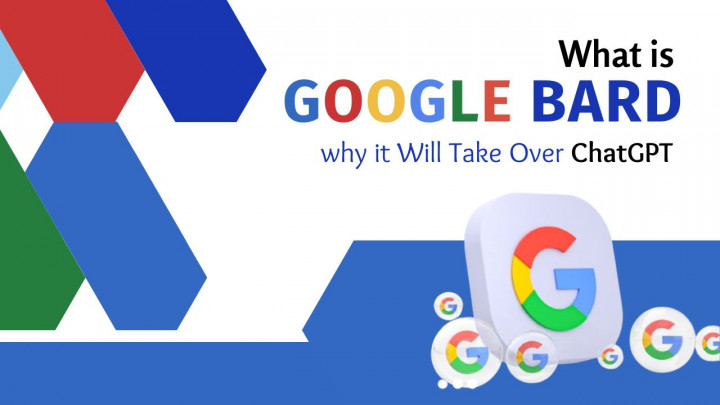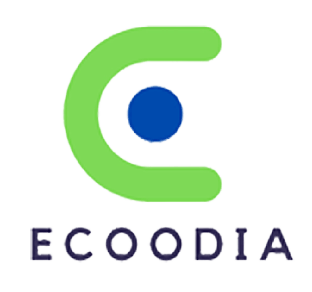What is Google Bard, why it Will Take Over ChatGPT

With little or no competition, Google Search has been the most used entry on the Internet for nearly 20 years. But in November 2022, ChatGPT, an experimental OpenAI chatbot predicted to be the next big IT disruptor, emerged as its first potential competitor.
While ChatGPT has plenty of room for growth, OpenAI's chatbot gained over a million users in less than a week after launching last year thanks to its honest responses to user queries, sending "code red" to tech giant Google. Google responded in February of this year by releasing Google Bard, its own AI chatbot, to the public.
What is Google Bard AI?
Similar to OpenAI's ChatGPT, Google Bard (dubbed Storyteller) is the latest AI-powered experimental chatbot that can respond to various inquiries and requests in a conversational manner. It aims to generate original and excellent answers using data from the Internet.
Although not yet widely used, the Google Bard AI is very likely integrated into Google Search and can be made available through its search bar. It was initially offered with Google's lightweight LaMDA model, which the company claims is a smaller model that uses less computing power, allowing it to scale to more users and providing more comments.
To ensure that Bard's responses meet high standards of information quality, security, and reasonableness, Bard plans to combine external feedback with its Internal testing.
What is LaMDA?
LaMDA (Language Model for Conversational Applications), Google's language model based on Transformer, a neural network architecture, and, surprisingly, ChatGPT's GPT-3 language model, are the Google Bard's core testing technology.
To accommodate more users and gather more feedback for use with Google's own internal testing, Google Bard was released with a lightweight mockup version of LaMDA that uses less computing power significantly more.
LaMDA is basically a statistical technique that uses previous words in a sequence to predict the next words. Its inventiveness lies in its ability to spark conversation in a more open-minded way than task-based responses often allow. For this reason, the topics can be presented in any order. Concepts such as reinforcement learning, recommendation, and multimodal user intent are used.
Read More: How to Build on Your Digital Marketing Momentum in 2023
How to use Google Bard AI?
One must be selected from the selected group of beta testers to use the Google Bard. If you want, you can launch the Google app on your mobile device, tap the chatbot icon, and then enter your prompt or request. The conversation can now start and you can start making requests or questions. Sadly, Google is no longer taking applications to join the beta testing team.
Features of Google Bard AI
While chatbots cannot hold conversations exactly like humans, they often give the impression that they can by generating a variety of digital texts that can be used in almost any situation. With almost any topic you throw at Google's chatbot, it will attempt to do this.
- Strives to represent the intersection of strength, wisdom and creativity.
- Collects data from online content and user feedback.
- LaMDA will be tested first with a simplified version.
- Collects feedback to help the AI system improve in the future.
- Google Bard AI use cases and illustrations.
- There are several potential uses for the Google Bard that could make life easier and fill the knowledge gap the most expected are:
- Its sophisticated AI algorithms provide tailored answers to queries.
- Uses the famous search engine Google to find information.
- Improved and more sophisticated task automation powered by Google AI. Personal support
- AI, especially for tasks like time management and planning assistance.
- Serves as a social hub and helps users chat in a variety of settings.
- Google has a long history of using artificial intelligence (AI) to improve search for billions of users.
Today, their latest artificial intelligence technologies are building on that history and creating entirely new ways to interact with information, whether it's language, images, video, or sound.
Read More: Top Marketing Channels for Small Businesses in this Article
Scope of AI with Google Bard
Artificial intelligence today gives us more opportunities to understand information more deeply and convert it into knowledge efficiently, making it easier for people to find what they are looking for. When it comes to solving problems with multiple possible solutions, AI will be very helpful.
Soon, AI-powered search capabilities will be able to condense complex information and diverse perspectives into quick, easy-to-understand formats. These new AI features will be available in Google Search soon. Google also plans to build a set of tools and APIs to support building advanced AI applications over time. For startups looking to build reliable and trustworthy AI systems, these developments can be essential.
Google Bard AI vs ChatGPT
Although Chat GPT and Bard AI perform similar tasks, they are different in other ways. ChatGPT gets information from the data it's trained on, while Bard AI pulls information from the internet to come up with answers. Since ChatGPT's training can only use data generated until 2021, this will give Bard an advantage. But Bard will receive real-time updates over the Internet.
Generative Pre-training Transformer 3 (GPT3), a self-regressive language model introduced in 2020 that uses deep learning to generate text that resembles human speech, serves as a language model language for ChatGPT. However, it is Google's LaMDA that powers Bard AI.
ChatGPT will be biased, as some users have complained. Users have reported experiencing racist and sexist reactions from the AI chatbot. However, users can avoid this by reformatting their requests. Since the internet is uncensored and hosts both false and correct information, analysts note that Google's Bard AI may also have a bias problem.
- Questions in real time can be answered by Google Bard AI. ChatGPT answers are based on data up to 2021.
- Regular search results can be obtained using Google Bard AI with a slight tweak in Google settings, but ChatGPT only provides results. document.
- ChatGPT is based on GPT, while Google Bard is based on LaMDA.
- One property not yet provided by Google Bard is the ChatGPT (AI Text Classifier) plagiarism checker.
- Currently Google Bard AI is completely free. OpenAI just unveiled its new paid plan, ChatGPT Plus.
Read More: Which Of The Following will you Need to Start an Email Marketing Programme
Limitations of Google Bard AI
The way software is developed, used, and managed has undergone a significant change thanks to chatbots and conversational AI. They are willing to redesign email programs, digital assistants, and search engines. This technology has limitations despite its great potential.
Chatbots still have a long way to go before they can distinguish fact from fiction and avoid biased responses, as they learn from the vast amount of information available on the Internet. In fact, the actual bug is the latest Google Bard mistake that was noted in its first demo. Google shared a GIF of one of Bard's answers to a question containing misinformation. The question was displayed in the GIF.
The biggest limitation of the AI chatbot is highlighted by this bug, showing the need for a thorough testing process. To counter tough competition from ChatGPT in their relatively untapped ecosystem, Google strives to improve Bard's answers and meet the high standard of real-world information quality.
Read More: What is Chat GPT & How To Use Chat GPT to Make Money Real World
What other AI services does Google have?
Other AI services created by Google remain private. The tech giants are generally very cautious when it comes to AI products and refrain from releasing them until they are sure of their effectiveness. For example, Google created Imagen, an AI image generator that, when released, could be a great alternative to OpenAI's DALL-E. Also, Google has an AI music generator called MusicLM, but there are no plans to make it public at the moment.
In a recent MusicLM article, Google acknowledges the danger these models can pose to creative theft, as well as the biases that can emerge in the process. training can affect underrepresented cultures and concerns about cultural appropriation.
Read More: How CRM Helps Businesses Improve Customer Satisfaction
